
Jaffna Resonances 2020
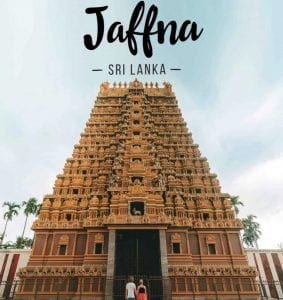
Every year, our school treats us to a ‘Week without walls’ program, which takes us on a week-long trip to a specific part of Sri Lanka, to engage with our more simplistic and authentic selves. The students of MYP 5 and DP 1 are provided with the opportunity to choose one out of five trips; I ultimately chose one that resonates with me, on a more personal level, and thus chose the ‘Jaffna Resonances’ option. This trip, is essentially founded on two aspects; service and creativity as the primary goal of the trip is to heighten our inter-cultural sensitivity by visiting the North of Sri Lanka, while engaging in an exchange of artistic talent and skill with local schools. This specific option outlined an itinerary, that helped to not only educate fellow Sri Lankans, like myself, about the hidden gem that is Jaffna, but to help erase the societal conditioning of pushing Jaffna into a state of victimhood and destigmatizing the supposed ethnically diverged war zone. Another more subliminal aim, was to expose ourselves to the plethora of culture and heritage that is embedded within the rosy hues of the Kovil walls, the gold accented Bo leaves embroidering the South Asian styled frescos, and within the electric buzz of energy acting as the pulsating life force of the peninsula.

At Jaffna Railway Station
Despite the Civil War ending in 2009, modern society still has not recovered from the grueling and damaging propaganda stunts that Sinhalese Extremists down south and the capital funded, thus reducing this flourishing, cultural hotspot into nothing more than a jumble of poverty, war and ethnic tension. It is continually influenced by the diasporic communities, that are still hooked on the past and refuse to grow into the future, which in its entirety is still impacting the morale and by extension, Jaffna as a whole. This coupled with the lack of development, primarily from housing in the affected areas has led me to believe that life is not as ‘normal’ as the Colombo Gazette paints it out to be. Therefore, I had a compelling urge to go discover for myself, how the once polished silvery statues of the Great Hindu Gods, have lost its shine or been desecrated completely.

Andrew, Rika and Group arrive at Thinnai Hotel.
Day 1
On the travel day, I was a little disoriented from having to wake up at 3:45 in the morning to leave for the train, but I clearly remember the fatigue diminishing with every gust of cold air that crashed onto my face, enveloping my senses and spiraling me into a short-lived sensation of ‘enthusiasm’. I am ashamed to say that after fighting my suitcase to hurl itself up, propel itself off the platform and onto the train, I slept for most of the seven-hour train journey. After choosing the very unfortunate aisle seat, where I gave strangers the perfect opportunity to brush their coarse coats and rough bags past me, scuffing my skin, I glimpsed through the cracks of moving bodies, dim lights and hushed whispers to see the moon proudly casting its silvery spell onto the desolate bench sitting on the platform, amidst the fog. I remember wanting to engrain that memory of the bench, it’s leg’s encapsulated into a glossy wall of fog, the moon shining its silvery accent, and the two concrete brittle pillars framing the photo. As my drowsiness finally caught up with me, I drifted off to sleep. I was awoken to the halt of the train, sadly not at our final destination as it had only been three hours since the start of the trip. As I looked around in an effort to gain my bearings, I was drawn to the vibrant green outside. I was genuinely shocked to see what was supposed to be the arid climate, devoid of much color and dehydrated of any life, bursting with the almost unnatural neon green that were the paddy fields, starkly contrasting the blue hues of the morning sky. Soon that moment passed, and the paddy fields were quickly reduced to a blur of colors, distorting the lines between the land and sky.
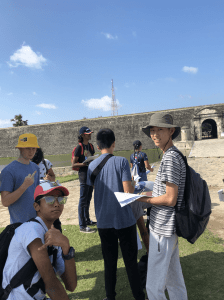
Group enters Jaffna Fort
Once we completed the train ride, we got into a van and maneuvered our way through Jaffna town. I initially thought that the feeling of driving past tightly packed shops, lined across the road, the bustle of shoppers crossing the street oblivious to the flux of three-wheelers, lazily making their way across town would be mimicked when driving through Jaffna town, but it was a vastly different experience. The bright flashes of red and yellow, were a welcome sight that contrasted the mundane beige of Colombo. What struck me the most, and what people would call ‘culture shock’ were the temples. It wasn’t the intricate carvings and sheer magnitude of the architecture that amazed me, but the range of colors used. I used to believe that all temples were shades of white and beige, but the spectrum of shades used to paint each crevasse, the smooth brush strokes finding every curve and edge of the design, the sun lighting the tips of the deities’ hands… I found the image to be quite powerful. Once we arrived at the hotel, Ms. Duncan took us to visit a prominent temple situated in the center of Jaffna. Once we stepped past the gold moonstone that greeted us, I was hit by the dark, maroon red that filled the inside. While walking clockwise around a pond, used by the priests to bathe, my senses were overwhelmed and soon started to merge into one, overall experience. I felt like the sharp aura of the jasmine flowers and smoky trail of incense following the ‘pooja’, was a soft contrast to the detailed frescos that made up the interior. The crystal blue of the water oozed a sense of calmness and relaxation, while the ripe bananas, milk, pomegranate seeds and floral arrangements on the offering table, distracted me.

Gold Detailing inside Kovil
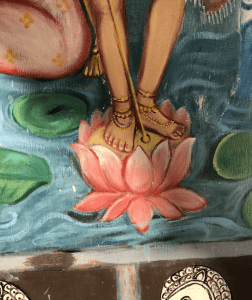
Painting of Lotus inside Kovil
After leaving the temple, we decided to visit Jaffna Fort, where I was exposed to a drastically different atmosphere. For one thing, the sea breeze that enveloped the decaying rock and moss infested brick, took me back to when I visited Galle Fort in Grade 8. While exploring the uniquely shaped fort, we were educated on its rich and somewhat gory history with regards to British Colonialism, LTTE presence and the 2004 Boxing Day Tsunami. Before leaving the fort, I quietly hoped that the ongoing projects to reconstruct the damaged buildings would not reach fruition, given that I secretly loved the incompleteness of the fort; it’s bullet- stricken walls, the wild grass growing a top watch towers, the wooden doors of the bell tower decaying through time, given that these discrepancies in the landscape were the very things that made it all the more real.
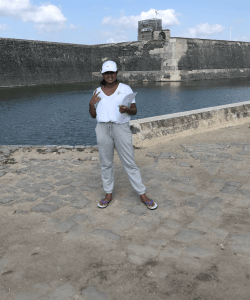
Anargi posing in front of the South Moat inside Jaffna Fort
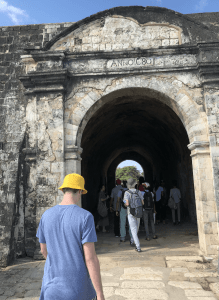
Louis walking into the Fort.
Day 2
The next day, we visited a small island off the course of Jaffna, which was where the historic ‘Nagadeepa Temple’ presided. This island is often referred to as a cultural phenomenon by the locals living the in the peninsula because the inhabitants of the island are a collection of the different ethnicities within the country; Sinhalese, Tamil and Malays. According to the locals, the people in the island were not affected by the war, as no mosque, church or temple was desecrated, and those living there seemingly did so in harmony. Having lived in Colombo for the all my life, I found that very difficult to believe as I had experienced faint tremors of the war, and that was enough to show me the extent of the racial divide within society.
However, when we arrived at the island, we only visited the Buddhist Temple, despite us voicing our interest to go to the Kovil as well. The exterior of the temple was similar to that of the Gangarama Temple in Colombo, given that they were both white and had gold moonstones to welcome travelers in. However, once we entered the temple, the inside walls were lined with murals, describing the story of Buddha and his work within the island. I was in awe of the colors used, as it reminded me of the overwhelming experience that I felt visiting the Kovil, a day prior.
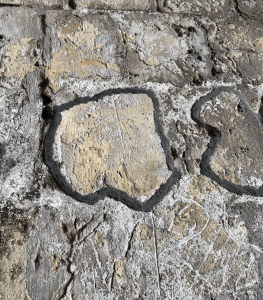
Dutch Patching onto initial Portugese Fort.
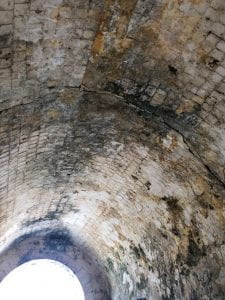
Bullet holes on top Arch
Day 3
This day was focused on the concert as our goals to present our performances to two schools, the first being to a Tamil Christian high school and the second being an Arts centric university. Despite the fact that I did not sing or play an instrument, I still felt like I was a part of the process, since I was tasked with handling the social media. I used Instagram live to record the performances, thus giving parents, teachers and the OSC community alike to stream the performance live. I was quite distracted with the influx of messages from the students, mostly happy faces that popped up on the side of my screen, that I felt like I missed the full extent of the performances. However, during the first performance, the power was cut halfway through and thus we had to resume the concert after it was fixed.
In between the first and second concert, Ms. Duncan treated us to lunch at a local favorite, ‘Malayan Café’. Despite having been to Jaffna on more than one occasion, I was ashamed to say that I have not eaten at this locally renowned restaurant. I think that it safe to say that I had more than one serving, as the food was spectacular. I was also excited to try this as I so wanted to complete my Jaffna experience by trying the local indulgences. The food was served in bright green banana leaves, its edges peeled outwards and bordering the silver rim of the plate. The vibrant spectrum of spices lined the outer layers of my paratha, further complemented by the creamy, cold glass of lassi.
After, we drove past Jaffna town towards the University of the Arts. The archway that marked the beginning of the institution was splattered with intricate detailing, mimicking the designs bordering the outer rim of the moonstone that was seen the day prior. Tall Bo trees were uniformly placed along the sand track, its lush broad leaves forming a canopy above us, sheltering our van from the penetrating light. As we got down, I saw three buildings marked ‘Arts’ කලාව, ‘Theatre’ රංග ශාලාව and ‘Music’ සංගීතය. I helped gather our sound equipment as we headed towards the සංගීතය building. Their performance was vastly different to the more westernized and pop culture music that was predominantly used in the first concert. Firstly, there were only two acts and within the performances, the students opted for a more choral and uniformed performance, returning to the musical roots of Sri Lanka; using indigenous instruments to accentuate their voices. While taking a video of this concert, I was immediately taken into the realm of Ancient Ceylon as the music translated into the narrative geethas , that described the glorious and flourishing era of Parakarmbahu and his disciples, the temples plated in foreign gold, the sapphires decorating the frames of mirrors, the circular shape jutting past the silk embroidery. However, during the first performance, despite there being hints of our native musical styles, there were a lot of pop styled pieces and thus reminded me of the ever-growing and budding potential of our musical talent scattered, across the world.
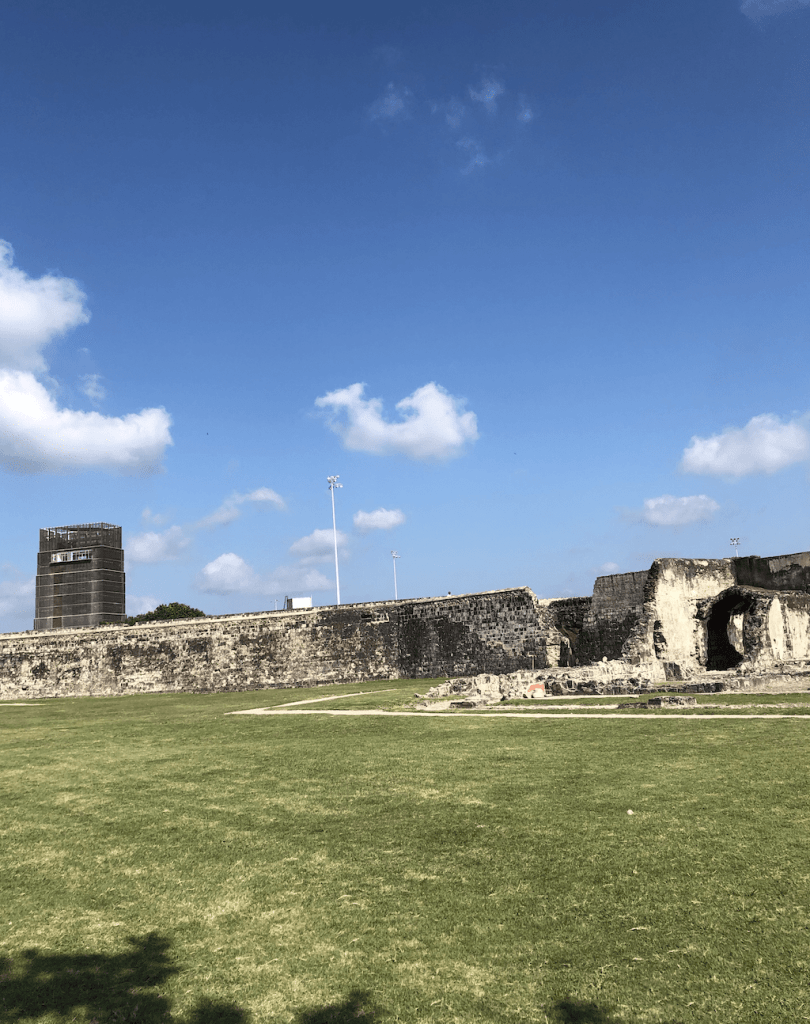
West Pavillion inside Fort
Day 4
This day was one of the most culturally enriching experiences as, on our way back to Colombo, we stopped at the first kingdom of Sri Lanka. Once I stepped passed the welcome arch, I took it all in; walking past the giant sthoopas, a white beacon attracting light amidst the greenery, bowing to King Pandukabhaya’s marble statue, tracing my finger past the cracks and holes of broken moonstones, being overwhelmed with the soft aura of jasmine flowers, mixing in with sharp cut of the cinnamon incense and finally the cardamom wafting off of the hot samosas. I felt privileged to be able to see the wonders of Anuradhapura, to stand where my heroes embedded in stories of folklore once stood, to marvel even a fragment of the city’s original grandness.

Walking into Nilanthanni
Day 5
On the last day, we boarded the bus to head back to the Capital. While looking past the vibrant colors whizzing past me, I could not believe how different the Northern Peninsula was, when compared to the rest of Sri Lanka. It was not just the environment that changed from a dusty orange and rocky landscape to more green and blue hues, but I felt myself change as we sped towards Colombo…. Somewhat worried that the subtle changes imposed on me by my experience in Jaffna would only be temporary. As I looked towards the surroundings, I tried to find similarities that would reconnect me to the pocketed gem that is Jaffna; the bright sun with the white of sthoopa, the green with the Bo leaves, the setting sun with orange of the frescos. And I realized that even though every second was taking me further away from Jaffna, I had never felt closer to it before.